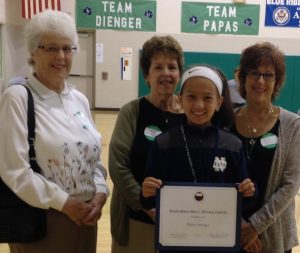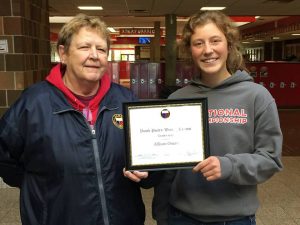Youth Community Service: Ideas for Juniorettes
GFWC’s Juniorettes, ages 12-18, are examples of how the call to do community service can be answered at any age. Juniorettes have school, extracurricular activities, and social lives to juggle, but they find time to make positive changes in their communities. In this blog post, we will discuss project suggestions for the Juniorette age group and their club advisors.
Since Juniorettes are students, it means that school can be a great and convenient place to accomplish their projects. Talk to your school to set up donation boxes and consider some of these great projects:
- Organize a donation drive for the local food bank.
- Collect winter coats for the homeless.
- Start a book drive for the local library, hospital, school, or relevant charity of choice.
- Collect toiletries for the area women’s shelter.
- Have a holiday toy drive for children from low-income families.
Those boxes can also be put in churches and local businesses because the more drop off locations, the better! Besides projects that involve donations, there are many more ways that teenagers can make a difference in their communities. The following ideas are projects that Juniorette clubs can do together as a group, meaning they can bond and have a good time while doing community service at the same time:
- Organize a car wash (or dog wash!) for a cause.
- Host a charity bake sale.
- Contact the local senior center or nursing home to learn how you can brighten their days, maybe by reading to them, etc.
- Volunteer at a Special Olympics event near you.
- Create care packages for the homeless shelter.
- Do a run/walk charity event.
Additionally, there are many ways that teens can put their efforts toward helping St. Jude Children’s Research Hospital, which would be a great way to acknowledge Childhood Cancer Awareness Month this September:
- Raise funds by hosting a Jude Teen Gala, while also getting to have some fun!
- Team Up for St. Jude by picking a sporting event at your school and donating a portion of game ticket sales, organizing a sprit week for fundraising, etc.
- Make craft kits to be distributed to patients throughout the week to entertain them and their families.
- Create gift bags for the waiting room filled with items like art supplies so that patients have something to do while they wait for their doctor.
Juniorettes are trail blazers in their age group, and show how community service is an important and worthwhile commitment. There are countless ways that they can give back to their communities, and they are doing just that! We hope some of these ideas spark your interest and become your next project.

